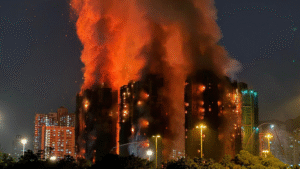Amid rising tensions between India and Pakistan following Operation Sindoor, former US Air Force pilot Dale Stark weighed in with a bold statement. On Thursday, Stark posted on social media that if the conflict escalates, he’s putting all his money on India. This confidence, he said, stems from firsthand experience: “I’ve flown with both Indian and Pakistani fighter pilots during my career. I’ll just say my money’s on the Indians if this continues to escalate.” Stark, a veteran who also served in Afghanistan during the 2000s, shared this remark in light of India’s recent cross-border strikes.
On Wednesday, the Indian Armed Forces executed coordinated precision strikes on terror camps affiliated with Jaish-e-Mohammed (JeM) and Lashkar-e-Taiba (LeT) at nine locations across Pakistan and Pakistan-occupied Kashmir (PoK). The operation, hailed as a significant success, has prompted fresh comparisons between the air capabilities of India and Pakistan — especially focusing on India’s Rafale fighter jets versus Pakistan’s F-16s and JF-17 Thunders.
India’s Rafale jets, classified as 4.5-generation multirole fighters, stand out as the most technologically advanced aircraft in the Indian Air Force’s fleet. Custom-built with 13 India-specific enhancements, these jets are optimized for subcontinental conditions. Key upgrades include the Meteor beyond-visual-range (BVR) missile, Thales RBE2 AESA radar, SCALP cruise missiles, HAMMER bombs, and advanced electronic warfare (EW) suites. These enhancements give the IAF exceptional capabilities for deep-strike missions, situational awareness, stealth, and survivability.
In contrast, Pakistan’s F-16s — once regarded as the backbone of its air force — face multiple limitations. Though competent in dogfighting and equipped with AIM-120C5 AMRAAM missiles, their use is heavily restricted by the US for counter-terrorism and internal defence only. They are not permitted for offensive operations against India, which diminishes their tactical advantage in open conflict. Further compounding the issue are aging airframes, limited upgrades, and financial constraints impacting maintenance.
Pakistan’s co-developed JF-17 Thunder jets, especially the newer Block 3 variant, bring improvements like AESA radar and upgraded avionics. However, these single-engine, lightweight aircraft still lag behind the Rafales in critical areas such as range, payload, sensor performance, and survivability in contested airspace.
In summary, while Pakistan’s aerial fleet has respectable assets, India’s Rafale jets give it a distinct edge in both technology and operational flexibility. Dale Stark’s endorsement of the IAF isn’t just patriotic cheerleading — it’s grounded in military realism and a clear-eyed look at capability, logistics, and strategic deployment.







